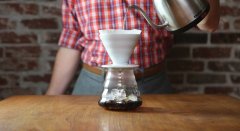How does Starbucks decaf coffee taste? Decaf coffee is decaf.

Professional coffee knowledge exchange more coffee bean information please follow the coffee workshop (Wechat official account cafe_style)
The origin and development of decaf: why are all Swiss decaf sold?
Decaffeinated Starbucks homemade coffee beans are made from the finest Latin American coffee beans by natural decaffeination processing, bringing a drupe and cocoa-like taste experience, especially the roasted natural sweetness in the aftertaste.
Gold baking
Medium baking
Deep baking
Acidity
Alcohol degree
Producing area
Latin America
Treatment method
Washing method (wet)
Flavor
Refreshing and balanced
The flavor of food suitable for matching
Drupes, apples, blueberries
As the name implies, decaffeinated coffee is coffee with low caffeine. The EU standard is that roasted coffee beans contain no more than 0.1% caffeine, while instant coffee is limited to no more than 0.3%. Some people drink decaffeinated coffee because they want to avoid migraines, hyperactivity, sleeplessness, or having children who are not suitable for caffeine. It doesn't seem to be a problem, but how is decaf made?
To reduce caffeine, you usually have to go through a processing process, such as direct / indirect contact, Swiss water washing and carbon dioxide high pressure extraction. Direct / indirect contact methods often involve dichloromethane (dichloromethane) to dissolve caffeine, and this solvent is one of the reasons why the ozone layer is difficult to repair.
According to a recent article in the science journal New Scientist, dichloromethane may delay the repair of the ozone layer by more than 30 years, Extra Crispy reported.
Dichloromethane was not regulated in the past because it was thought to be short-lived and difficult to affect the stratosphere high above. But the new study finds that the chlorine may have a big impact on the environment by 2050, making the hole in the ozone layer difficult to repair.
Coffee information website Sprudge even stressed that although dichloromethane is an industrial solvent and is often used in industries such as medicine and plastics, some manufacturers also use it to reduce caffeine in coffee or tea. It's scary, isn't it?
What if I really want decaf coffee? Coffee beans treated by Swiss washing are a relatively good choice. In this way, the coffee beans are simply soaked in warm water to dissolve caffeine, and then filtered with activated carbon. Although some flavor will be lost, at least no chemical solvent is used, which is much milder for the environment or the human body.
.
Important Notice :
前街咖啡 FrontStreet Coffee has moved to new addredd:
FrontStreet Coffee Address: 315,Donghua East Road,GuangZhou
Tel:020 38364473
- Prev

How does Starbucks decaffeinated coffee taste? Starbucks decaffeinated coffee method
Professional coffee knowledge exchange more coffee bean information please follow the origin and development of decaf coffee in coffee workshop (Wechat official account cafe_style): why are all Swiss water treatment decaf coffee sold? Once upon a time, the author can drink four or five cups of noodles a day without changing color, to more than one cup is prone to palpitations, have done Holter EKG and did not find a special reason, often smell
- Next

Hand coffee master quick trick sharing-explanation of five techniques and four elements of hand coffee brewing
Professional coffee knowledge exchange more coffee bean information Please pay attention to the coffee workshop (Wechat official account cafe_style) the seven factors that affect hand coffee are you ready to become a coffee master? Hand-brewed coffee is your first choice. From boutique coffee shops to blue bottle coffee shops, all over the world are doing hand-brewing, from the simplest steps to play all the fragrances of a bean.
Related
- Beginners will see the "Coffee pull flower" guide!
- What is the difference between ice blog purified milk and ordinary milk coffee?
- Why is the Philippines the largest producer of crops in Liberia?
- For coffee extraction, should the fine powder be retained?
- How does extracted espresso fill pressed powder? How much strength does it take to press the powder?
- How to make jasmine cold extract coffee? Is the jasmine + latte good?
- Will this little toy really make the coffee taste better? How does Lily Drip affect coffee extraction?
- Will the action of slapping the filter cup also affect coffee extraction?
- What's the difference between powder-to-water ratio and powder-to-liquid ratio?
- What is the Ethiopian local species? What does it have to do with Heirloom native species?

